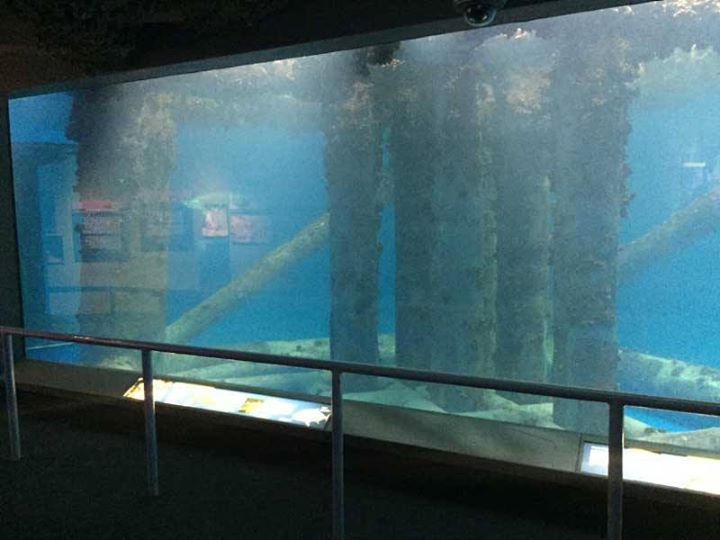The Texas State Aquarium is suffering considerable losses in some displays after an attempt to treat parasites lead to a massive die-off Tuesday night. The aquarium in Corpus Cristi, had used a method they first used on a smaller display with no adverse effects, however once administered to the larger systems they discovered it was not going as planned.
The staff noticed the adverse reaction and sudden die-off started about two hours after the treatment was administered. The staff worked diligently to attempt to save the fish, pulling them out of the exhibits and the efforts continued throughout the night with little success. Many animals were affected, but it is still too early to post an exact count. The aquarium made an official statement on Facebook stating:
The Texas State Aquarium is saddened to report a loss of its indoor aquatic animal collection overnight. In an attempt to control a particularly difficult parasite that had proven resistant to other treatments, staff administered a new treatment that is commonly used by many other aquariums in treating similar issues. Many of the animals in the affected exhibits had an adverse reaction to the medication. Staff members worked diligently throughout the night to save as much of the collection as possible, but considerable losses were sustained.
Aquarium exhibits impacted include Islands of Steel, Flower Gardens, and Lionfish. Fortunately, Living Shores, Nearshore, and Floating Phantoms, as well as a number of smaller exhibits, were not affected. None of the outdoor exhibits such as Tortuga Cay, Stingray Lagoon, or Dolphin Bay were affected.
As a standard precaution, staff had tested the treatment on an individual smaller exhibit with no adverse reaction prior to administering it into the larger exhibit.
The Aquarium’s first priority is to focus on stabilizing the water in the affected exhibits. The Aquarium has sent water samples from affected exhibits to testing laboratories in hopes of a clear explanation for what caused the adverse reaction.
“This is a very sad day at the Texas State Aquarium,” remarked Aquarium Chief Marketing Officer Richard E. Glover, Jr. “We are working diligently to find out what caused the adverse reaction, and we will keep the public informed with any updates.”
“For the staff, this has been devastating,” said Aquarium Chief Marketing Officer Richard E. Glover, Jr. to BuzzFeed News. “Our husbandry staff puts their hearts and souls into the care given to all of the animals in our collection, and this has been an extremely difficult night and day for the people responsible for the day-to-day care of our animals, as well as all of our staff and volunteers. These animals mean so much to us all, and this is not something any of us will get over easily.”
According to Glover, Islands of Steel is about 125,000 gallons and housed a sand tiger shark, some nurse sharks, and species of larger fish found in the Gulf of Mexico, such as tarpon and grouper. The Flower Gardens exhibit is approximately 40,000 gallons and housed eels and midsize and smaller fish that would be found in the Flower Gardens National Sanctuary in the Gulf of Mexico. Confirmed losses included the sand tiger shark, the nurse sharks, and most of the other fish in both exhibits, he said. All of the lionfish in the lionfish exhibit also died.
The aquarium remained open despite the major setback and has been received encouragement and support from fans and industry peers alike on social media. We are hoping the staff can discover why there was just a negative reaction to the treatment, so that other public aquariums and hobbyists can learn from this misfortune.
[via BuzzFeed]



